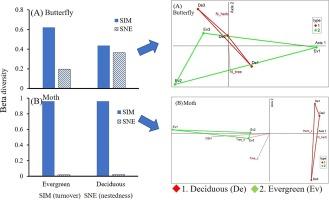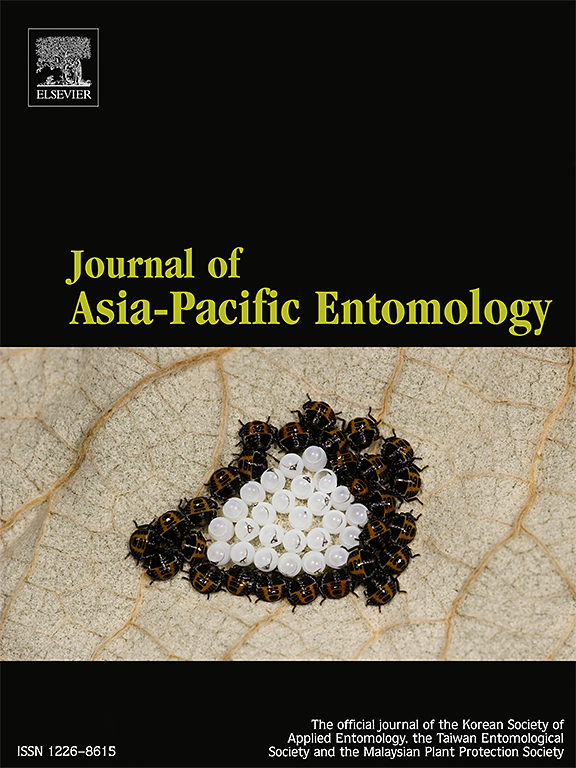Different diversity patterns of butterfly and moth assemblages between deciduous and evergreen broad-leaf forests
Abstract
In this study, we compared the diversity and abundance of two groups of Lepidopteran insects—butterflies and moths—across deciduous (DBL) and evergreen broad-leaved (EBL) tree communities in warm temperate forests. Over three years (from 2018 to 2020) at the Wando Arboretum, we used transect and point methods to sample butterflies and light traps to sample moths. Our findings revealed that the total estimated species richness was higher in EBL compared to DBL. Non-metric multidimensional scaling (NMDS) analysis confirmed distinct moth assemblages between the two tree communities, while butterfly assemblages did not exhibit such separation. The seasonal diversity patterns of butterflies in both forests differed significantly, whereas those of moths exhibited a similar trend with a peak in June. Beta diversity components indicated high turnover rates in moth assemblages across both tree communities and high nestedness in butterfly assemblages within the DBL. Although the diet breadth of butterflies and moths did not significantly differ between the two tree communities, the number of butterfly species per host plant was higher in DBL and that of moths was higher in EBL. Considering the ongoing vegetation transition from DBL to EBL, changes in forest structure—such as canopy openness and tree density—may adversely impact insect communities within DBL.


 求助内容:
求助内容: 应助结果提醒方式:
应助结果提醒方式:


